Last Spring, we spent several weeks photographing libraries in Central Mexico with our son Walker, his girlfriend Rosa, and separately with Rosa’s Mom Paulina and Rosa’s sister Ana. Our two-week Library Road Trip in late December to the Yucatán Peninsula was a continuation of that earlier study of Mexican libraries. This time we traveled all together with the addition of a family friend Audrey from Washington, DC. Traveling with these extraordinary talented women was an unexpected gift which made the journey a real joy.

After having our seats bumped up to first-class because of Walker’s CBS frequent-flyer miles, we landed in the old capital city of Mérida which is the cultural capital of the region as well.


The Central Library of the University was closed but Paulina’s people skills were able to pry open the doors for a few minutes while I quickly photographed the amazing interior. The public library was also closed but the outside was bathed in a beautiful winter, tropical light that made for a beautiful photograph.

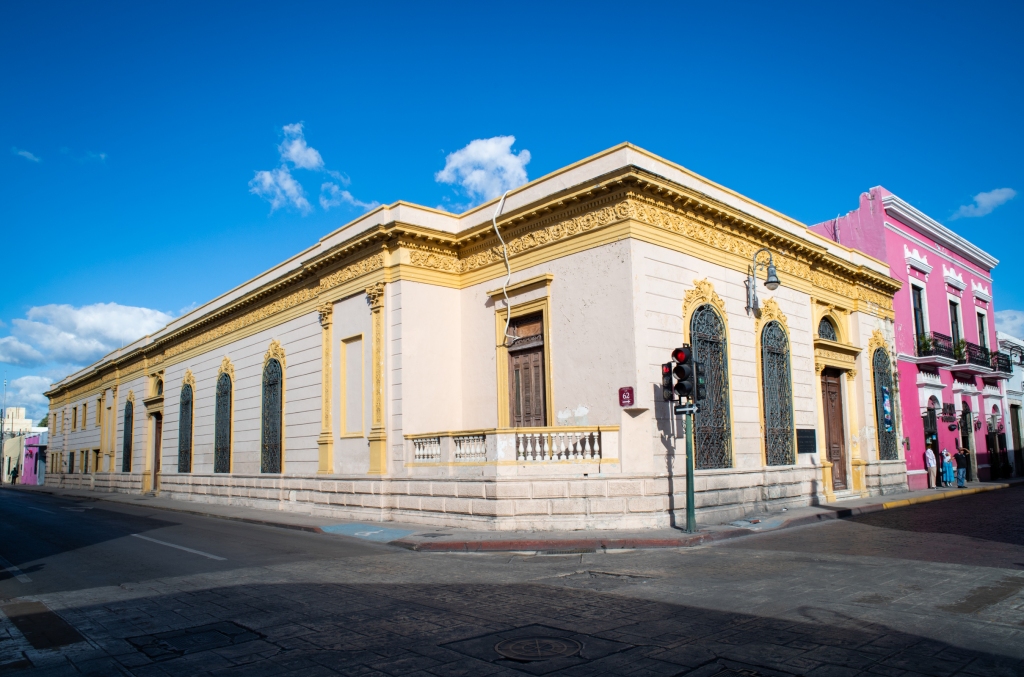
The next day, we wasted no time getting up early and heading to the famous and crowded Mayan ruin of Uxmal. When we arrived, we had the place to ourselves, but it filled up quickly as the tour buses showed up. The ancient Mayan were incredible engineers who built many reservoirs to catch rain in this very dry part of the world and produced the massive ruins that left us spellbound. It reminded Ellen and I of Angkor Wat in Cambodia where another ancient civilization created an empire by controlling its water.


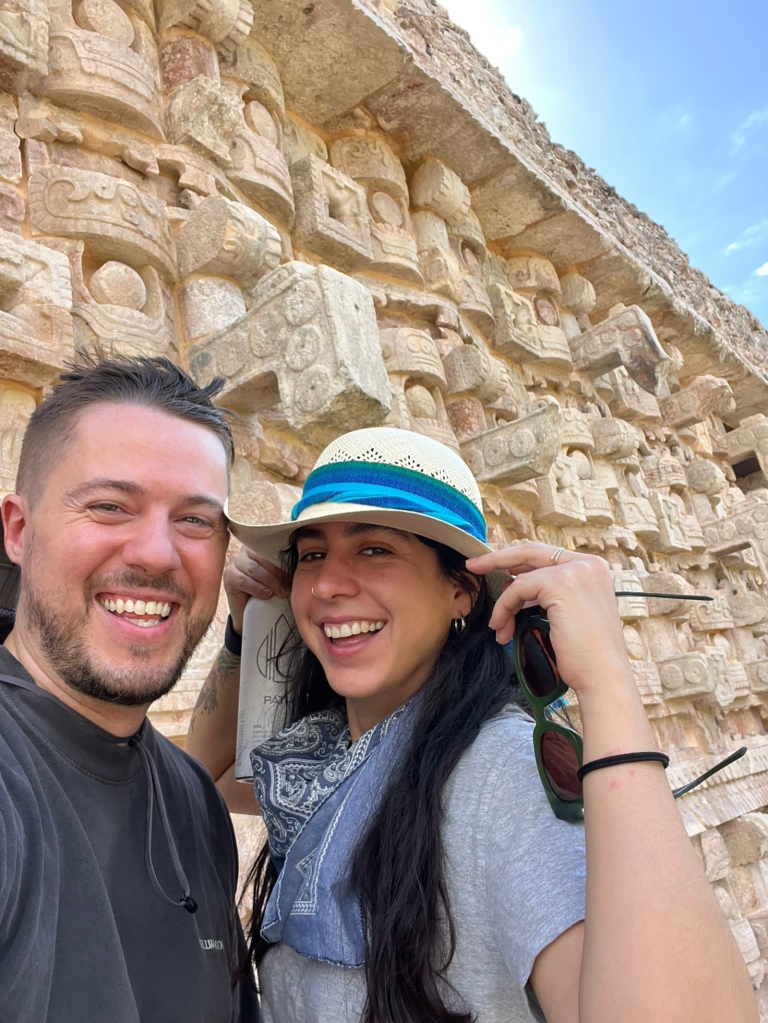

Dzibilchaltún was the longest continuously used Maya city, serving its people from around 1500 BCE until the European conquest in the 1540s. It felt empty after Uxmal, but it is vast in size and contains about 8400 structures, few of which are excavated. A new visitor center was being built to accommodate what the government hopes will be a large increase in tourism here in the future.
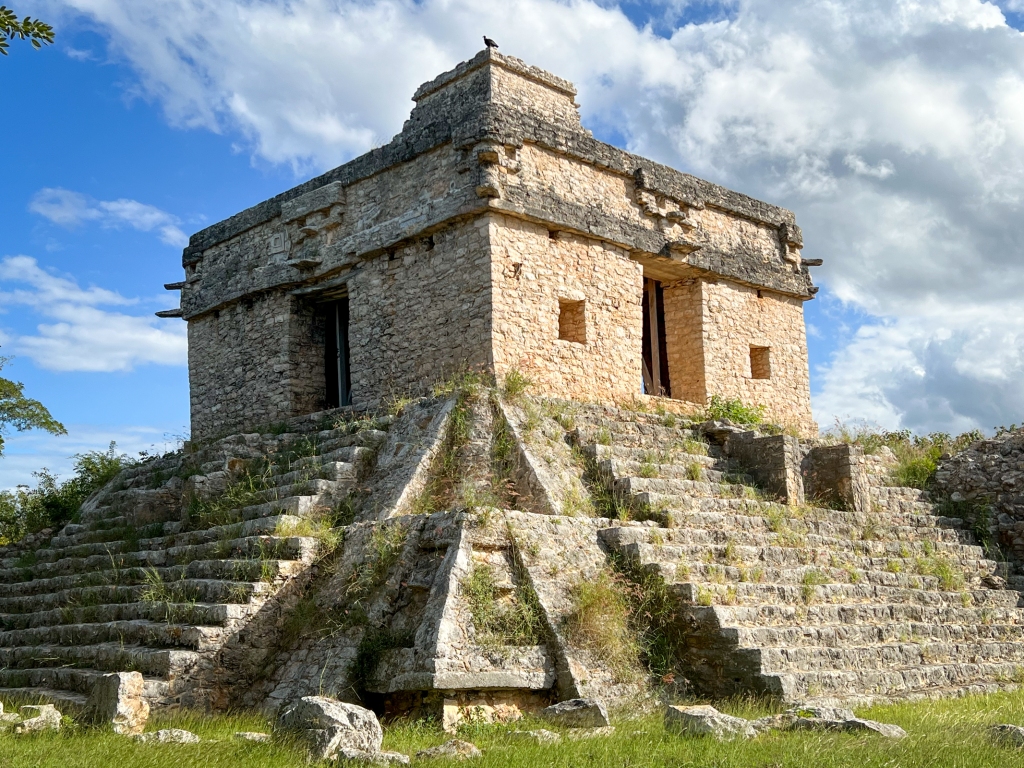
The Yucatán Peninsula’s cenotes are everywhere. These are limestone sinkholes that are created when the hard surface of the land collapses and reveals a small part of an immense network of interconnected underground rivers. The Cenote Tecoh was a funky, Mayan run, remote backwoods sinkhole. We stumbled upon it while looking for a different cenote that was closed. Having never been in a cenote, we were all horrified by the creaky, steep wooden steps that was not even remotely handicapped accessible. Somehow, most of us summoned some unfathomable courage to make our way down and jump in this special place. I was so thankful that we recently started swimming laps in San Francisco’s public pools. But swimming in a cenote was exhilarating, liberating, and unique.

Because it was so typical, the tiny public library in the small Mayan town of Tixkokob was one of my favorites. We briefly stopped here on our way to the Yellow City of Izamal. This town was once the center of ancient Mayan religiosity which is probably why the Spanish later built an enormous Franciscan monastery which impressively still stands here today. Even the entrance to the Franciscan Library was beautiful.

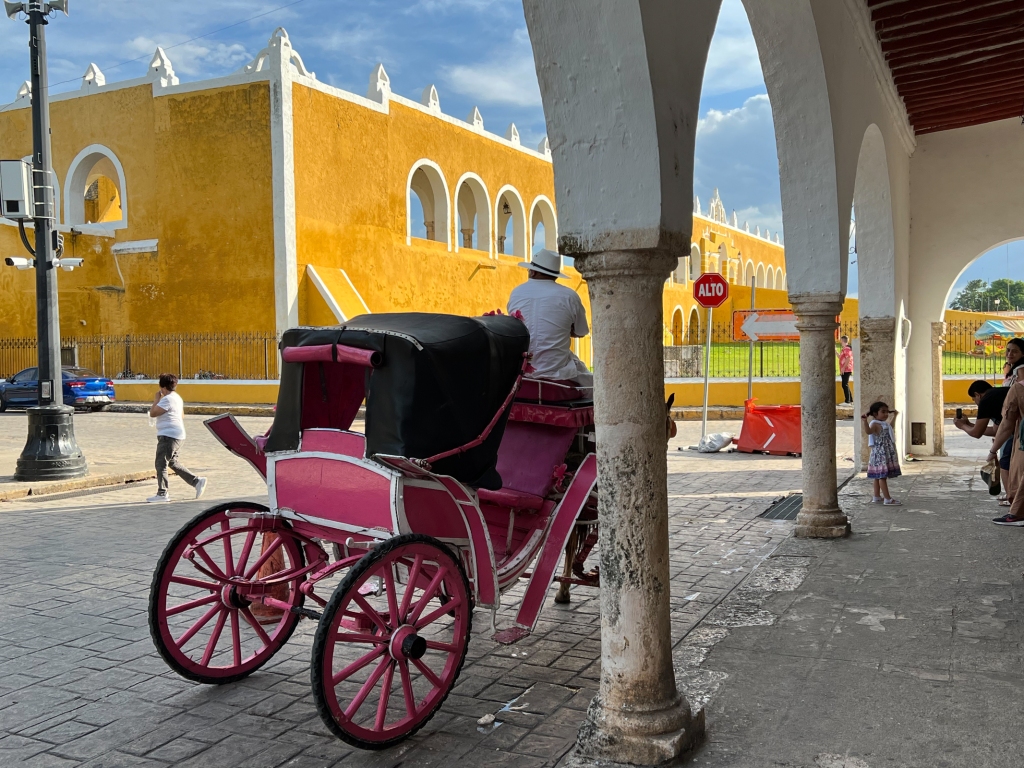
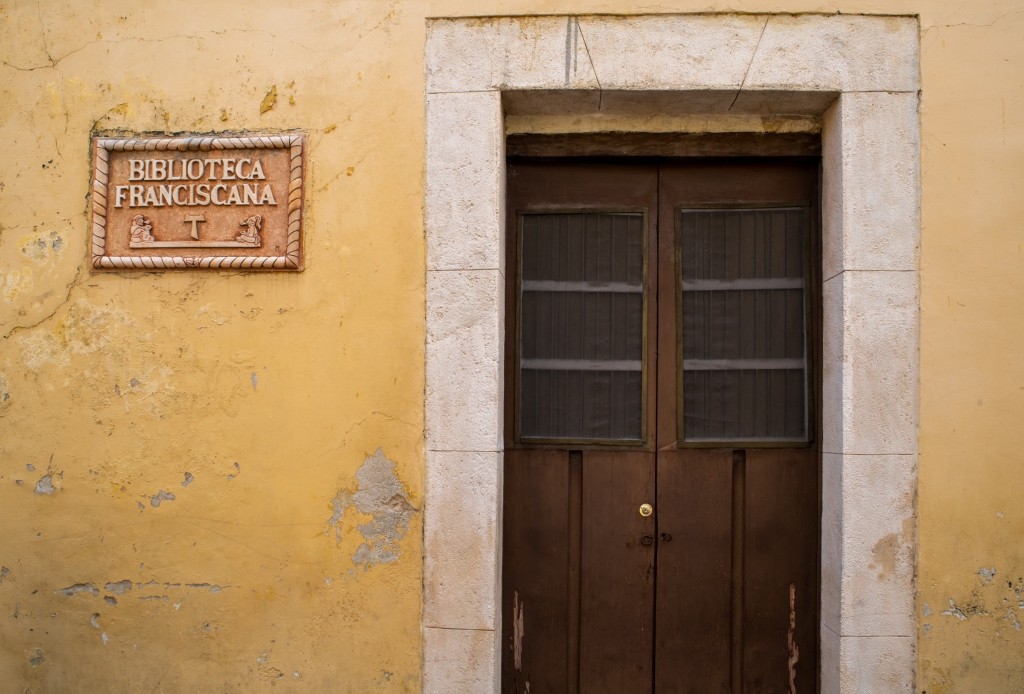
The most famous and best restored of the Yucatán Mayan sites is Chichén Itzá. The tour buses from Cancún arrive early so we arrived even earlier. Although built during the late Classical Mayan period, the substantial fusion of the invading Toltec and Mayan architectural styles made Chichén unique among the Yucatán Peninsula’s ruins.
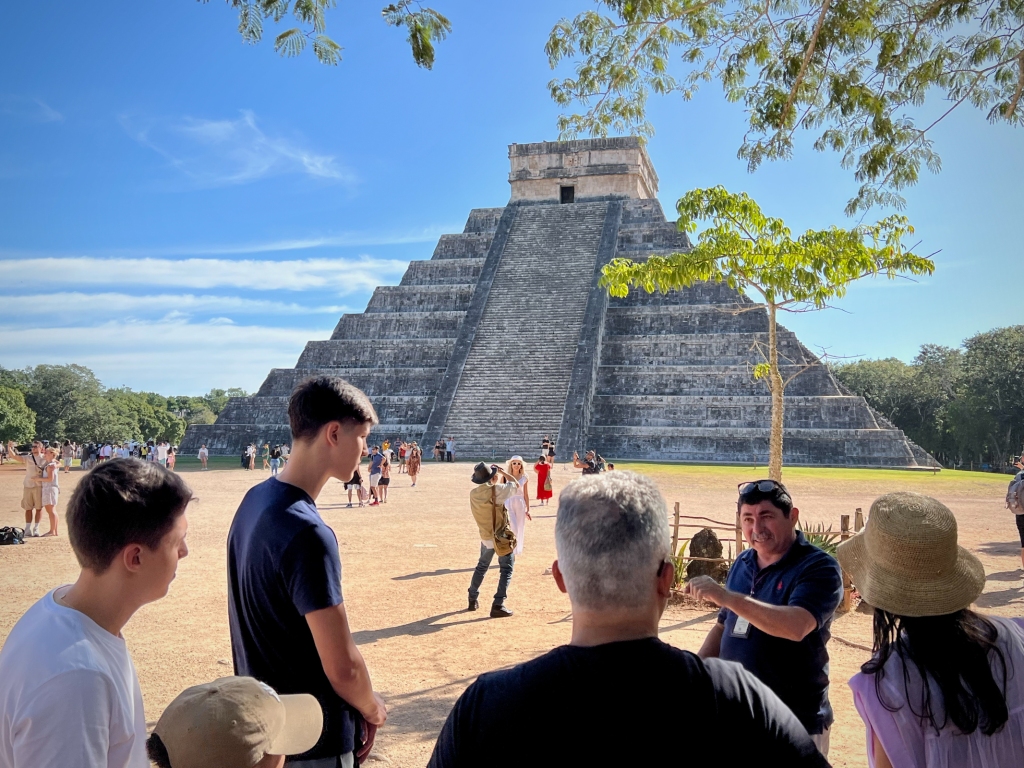

The second cenote we visited was larger, better organized, had more people and was run by a Mayan cooperative group. Floating in Cenote Yokdzonot was mysterious, magical, and blissful. And I really didn’t want to leave.


After a long drive we arrived about halfway down the eastern coast of the Yucatán at a small town called Tulum. Its spectacular coastline makes it one of the top beaches in Mexico. And it has dramatically situated Mayan ruins overlooking the Caribbean. Our first night was spent on the beach being mesmerized by the stars, the swift moving clouds, and the sea.

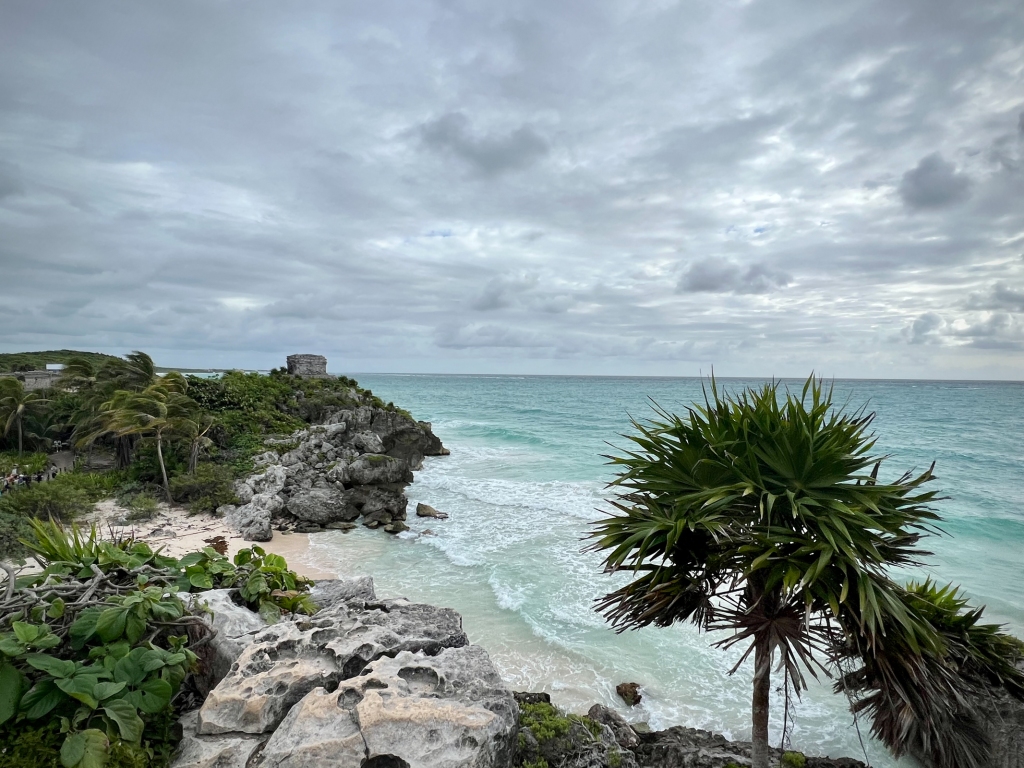
The next morning, it seemed that Tulum’s aspiration was to become the next Cancún. All the signs were in English and pointed to an overheated real estate market that will probably boom when the huge infrastructure project called Train Maya is completed linking tourist sites all over the Peninsula.

One of problems (among many) of the rampant privatization and commercialization of Tulum was the loss of nature and of the commons. That made it virtually impossible to go to a public beach. Fortunately, our intrepid guides of Paulina, Rosa and Walker were able to find the only beach that wasn’t a private beach club. We spent the afternoon thoroughly enjoying the crystal-clear ocean and the warm tropical air.




After another long drive, we arrived at the small southern coastal town of Bacalar and celebrated Christmas eve overlooking the water.

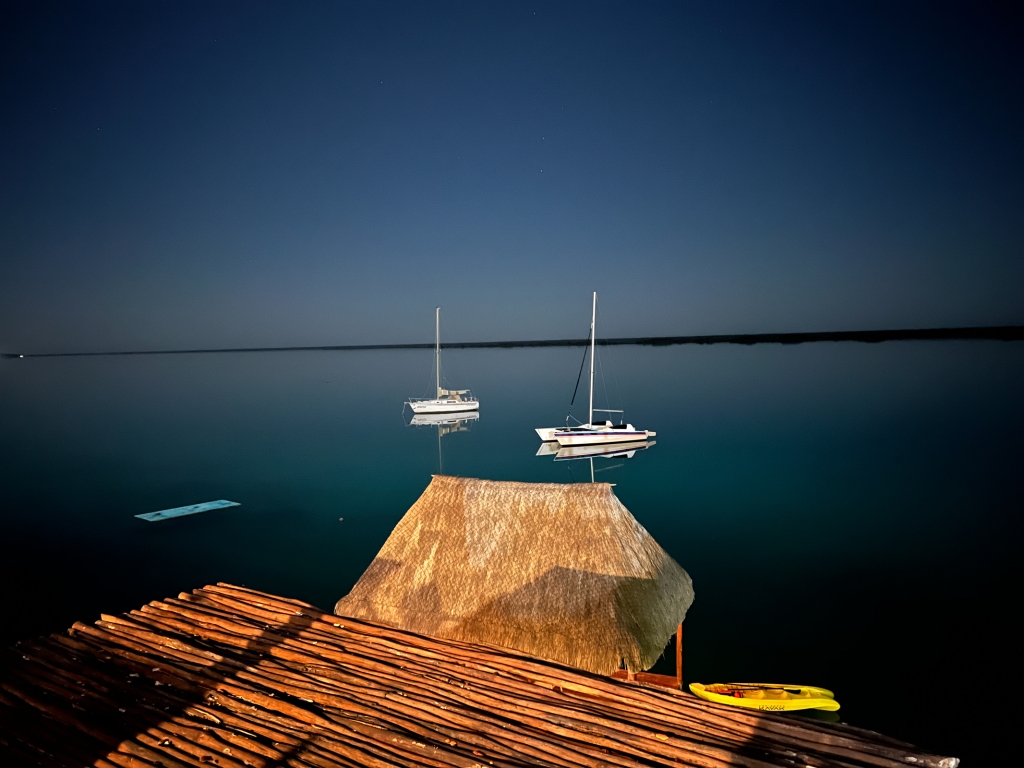
We spent all of Christmas day by Laguna Bacalar swimming, lazing around, and chilling out in the tropical heat and humidity.

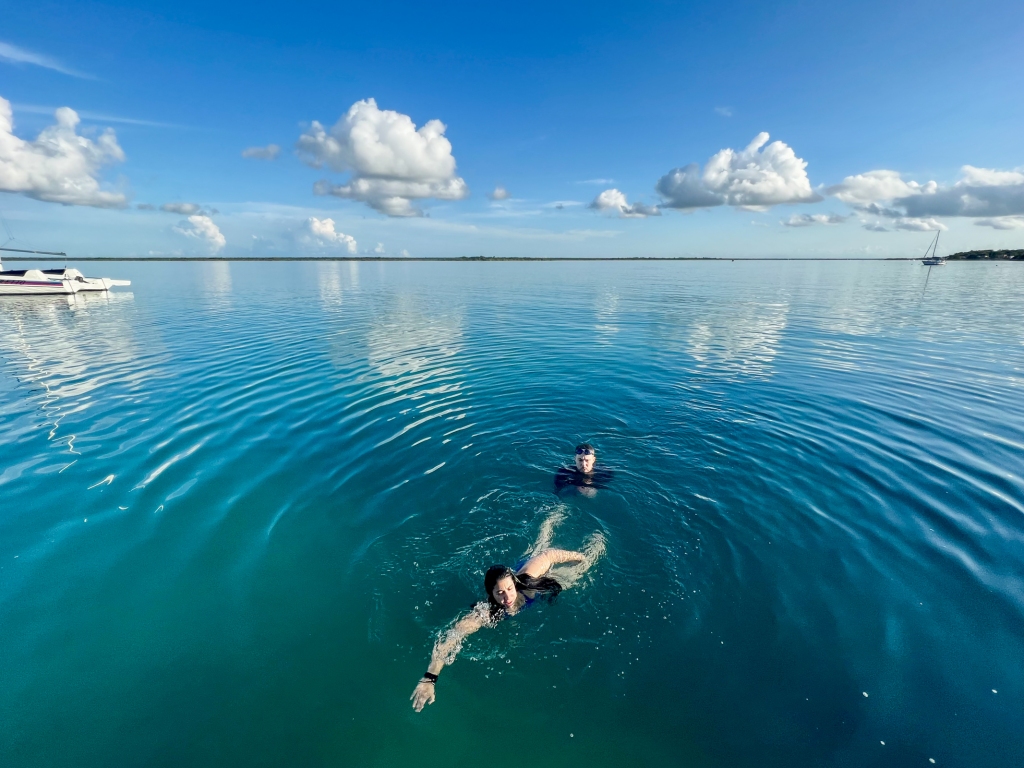

Early the next morning we rented a group boat and traveled far out into the Laguna being dazzled by it all. We sailed by an unusual underwater cenote and an old Spanish fort build to ward off the English pirates. Bacalar was sacked by the English sea dogs in 1573 and the intricate, secluded reefs, cays and coastline of this area made a perfect base for them to have quick access to Spanish loot.
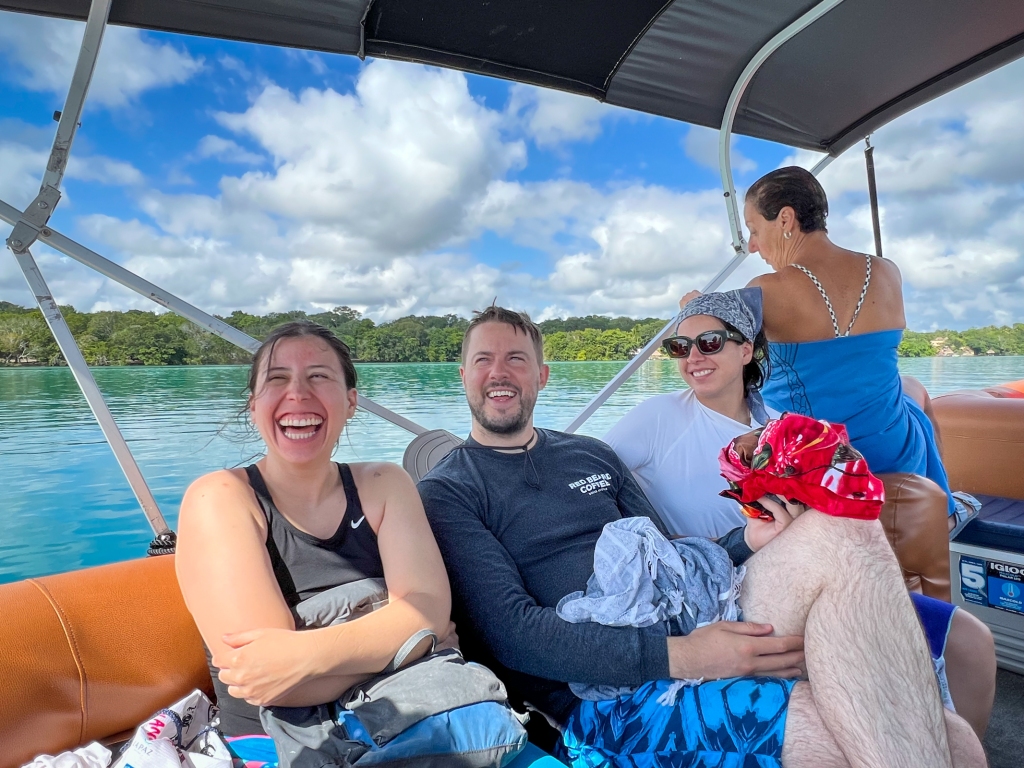
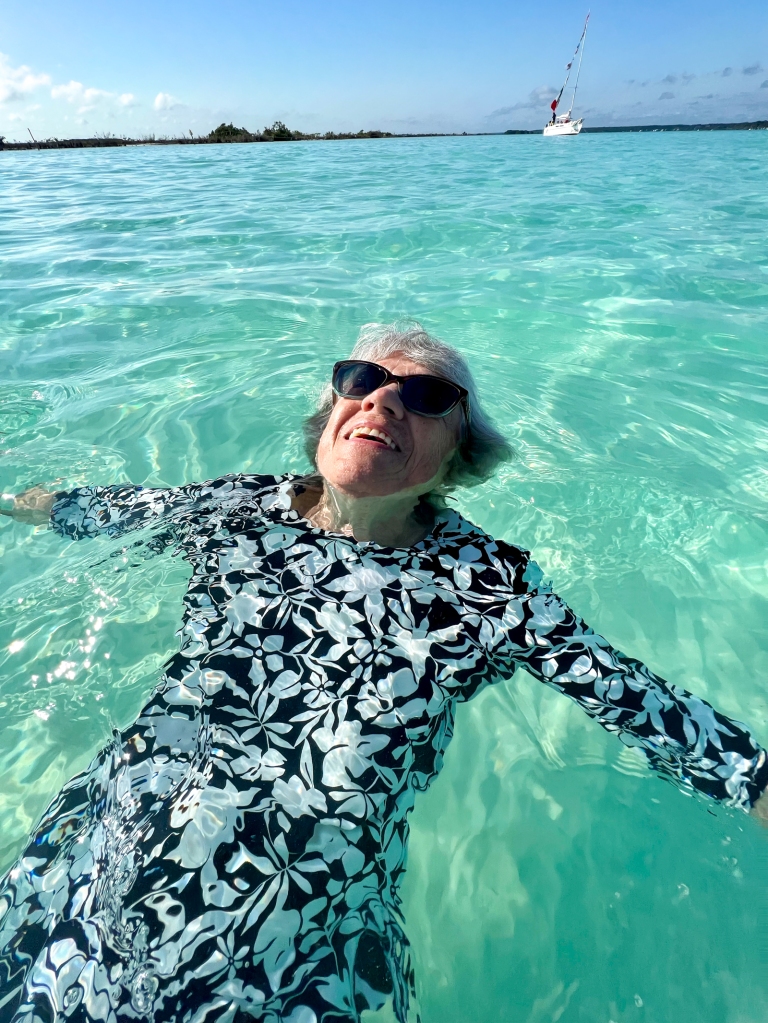
As we sailed by Pirate’s Cove, I thought about my long-ago but direct relative Sir Anthony Holden (my middle name is Holden). He was knighted by Queen Elizabeth I in the 17th century because he was very good at robbing the Spanish Galleons of their gold. The grateful English called him a privateer and the Spanish called him a pirate. I fantasized about how this must have been where he did his dirty work as a real-life pirate of the Caribbean.
In the afternoon, Walker and I slipped away from the group and drove a short distance south to the border with Belize. Because of security, we walked across the border and hailed a shared taxi to the public library in the small town of Corozal. The driver was drunk and had two six-packs of Corona beer on the floor, but he spoke beautiful English and somehow navigated us safely though the empty streets to the library. It had recently celebrated its 88th anniversary but was closed today because of Christmas. The father-son reading sculpture in front was a great expression of the importance of the library in this very poor town. Our taxi driver who drove us back to the border was also three sheets to the wind, but his inebriation didn’t mask his delightful personality. Once again, we were saved by the empty streets of Belize.


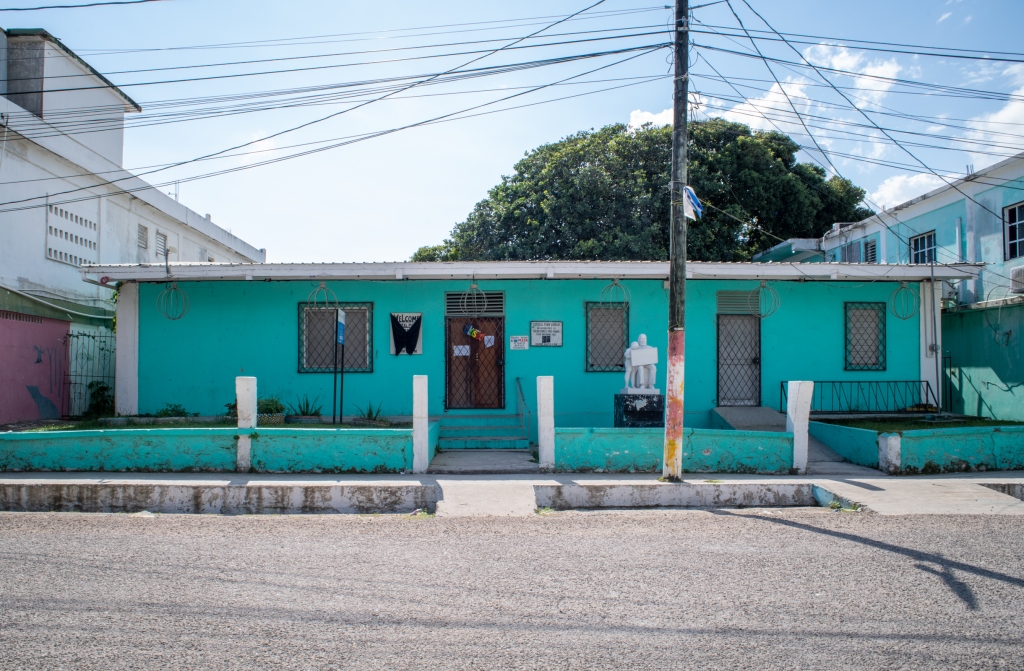


The area we now call Belize was believed (maybe) to be settled by English pirates or shipwrecked buccaneers seeking lumber and/or a safe haven in the mid-1600s. It later became an English colony and explains why all the signs were in English and much of the population still speaks English today. Although very poor, and parts of it very dangerous, Belize struck me as a special world apart from far wealthier Mexico. A seaside park was filled with murals paid for, in part, by Rotary International and the government of Taiwan. Our street food lunch was great, and we didn’t even suffer from a “funny tummy” afterwards. We both didn’t want to leave but knew we had much more to do back in Mexico.
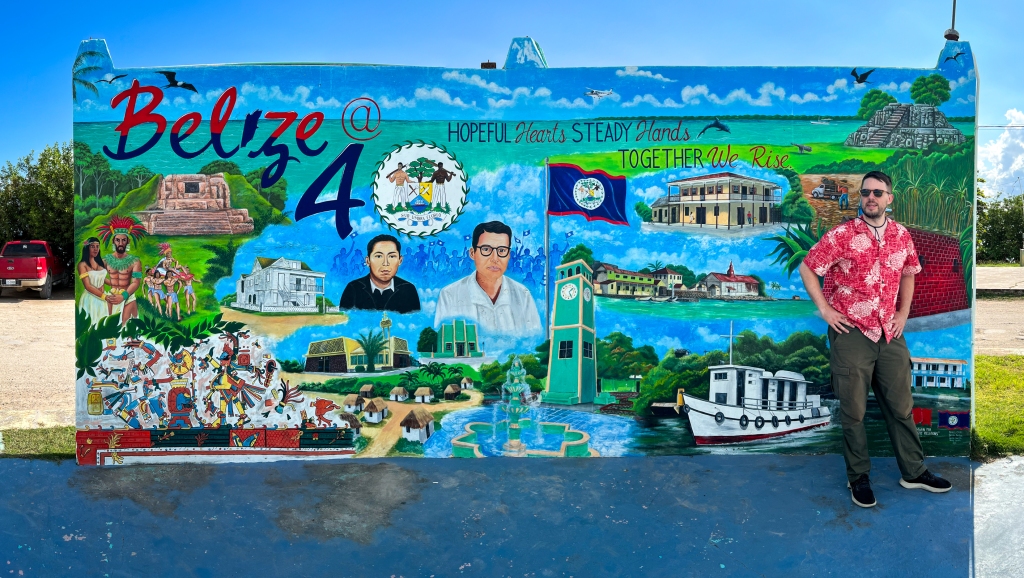




The next day we took a long drive all the way across the southern edge of the Yucatán Peninsula from the Caribbean to the Gulf of Mexico in Campeche. Along the way we stopped at several spectacular but less visited Mayan ruins. At Becan, we hauled ourselves up a very steep pyramid. As we neared the top, we spotted a family with a little boy quickly marching ahead. We decided that if he could do, we could do it and were quickly rewarded by breathtaking views of the surrounding jungle. Rosa pointed out the “gringo skin” tree which was bright red and peeling just like some of the gringos we saw.




The ruins at Balamkú were only discovered in 1990 and the awe-inspiring Temple of the Jaguar still contained some of its original red paint. There were very few other visitors and, in the heat and humidity of the jungle we all felt a strange connection with this culture from long ago.



Campeche is one of the two oldest walled cities in North America, the other being Québec City in Canada. The walls here were, of course, to keep my marauding English relatives out. It is listed on UNESCO’s World Heritage Site list and this charming city fully deserves the recognition although Mérida gets more of the tourists. We visited the public library at night which is housed in an impressive old porticoed building.


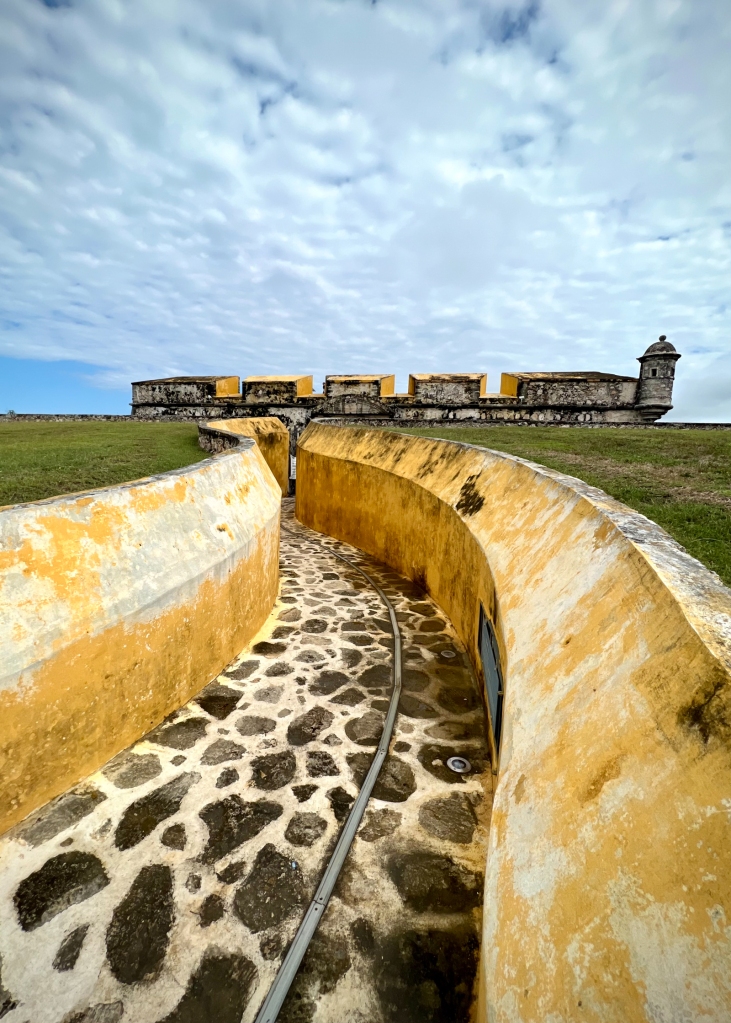
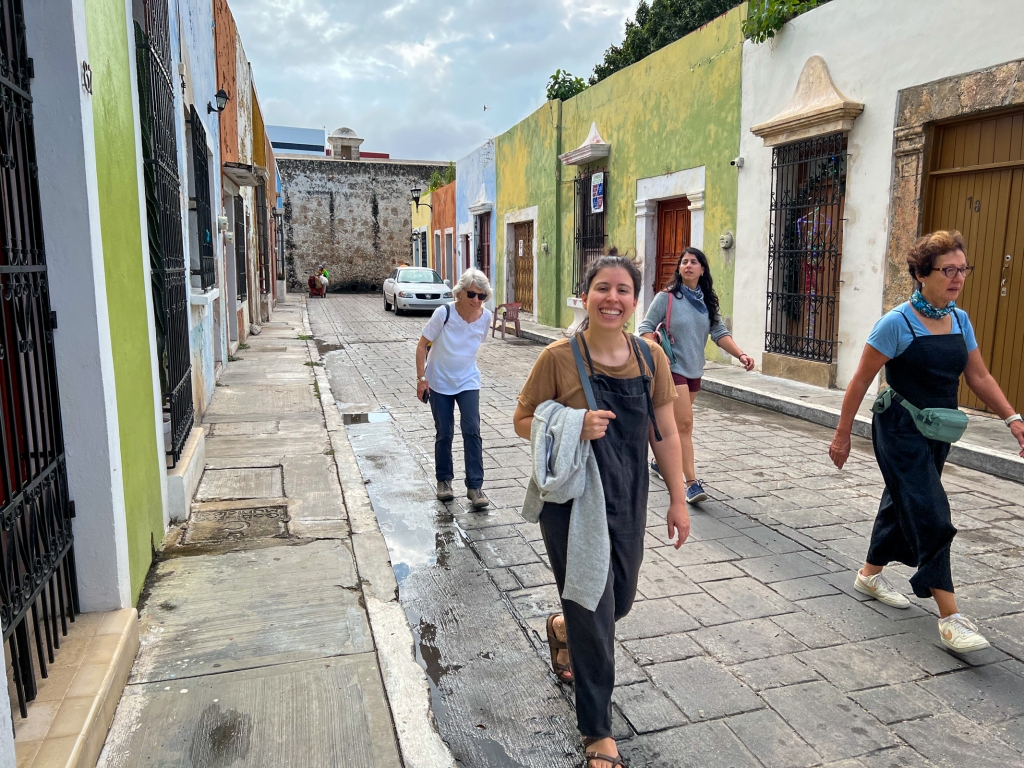

Our last Mayan site was the awesome Edzná site. Deep in the jungle, but close enough to cities to have more tourists, it was massive and impressively undeveloped. It was discovered only in the 20th century, and we all felt visiting the Temple of the Masks was one of the highlights of the trip. These reddish stucco masks of extraordinarily well-preserved faces were startling and a revelation of the mysterious depth of this culture and place.

Our last night was spent again in Mérida where we visited the Mayan Cultural Center, had one of the best meals of the trip, and collapsed in our beds before waking up for our insanely early cab ride to the airport.
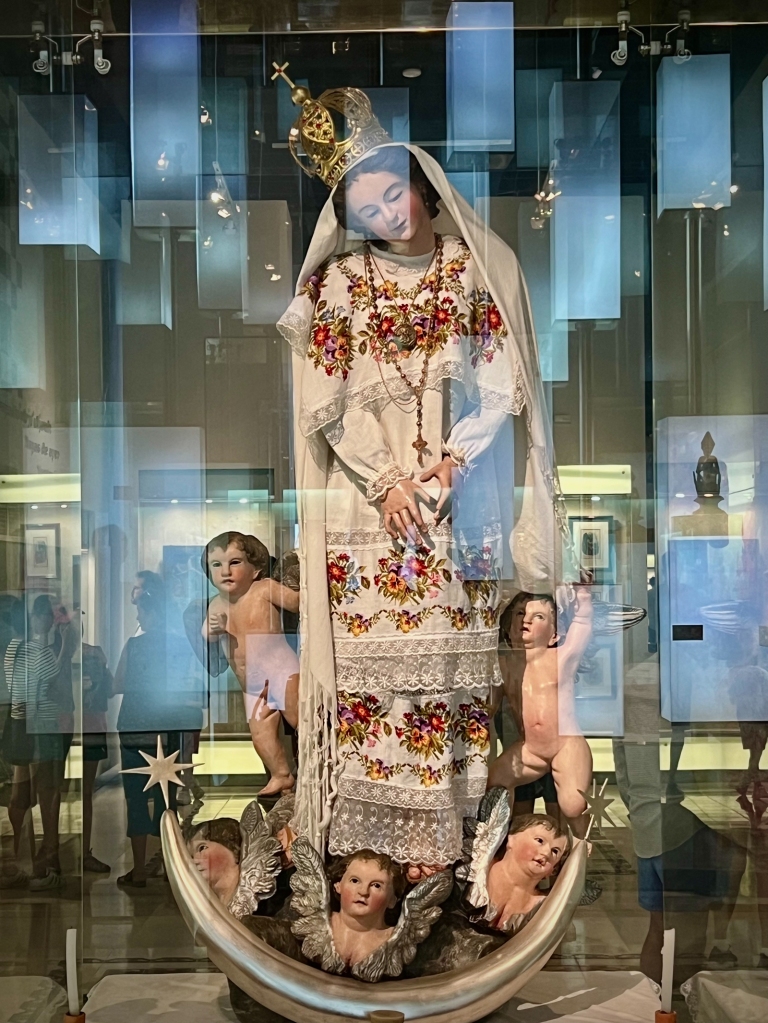
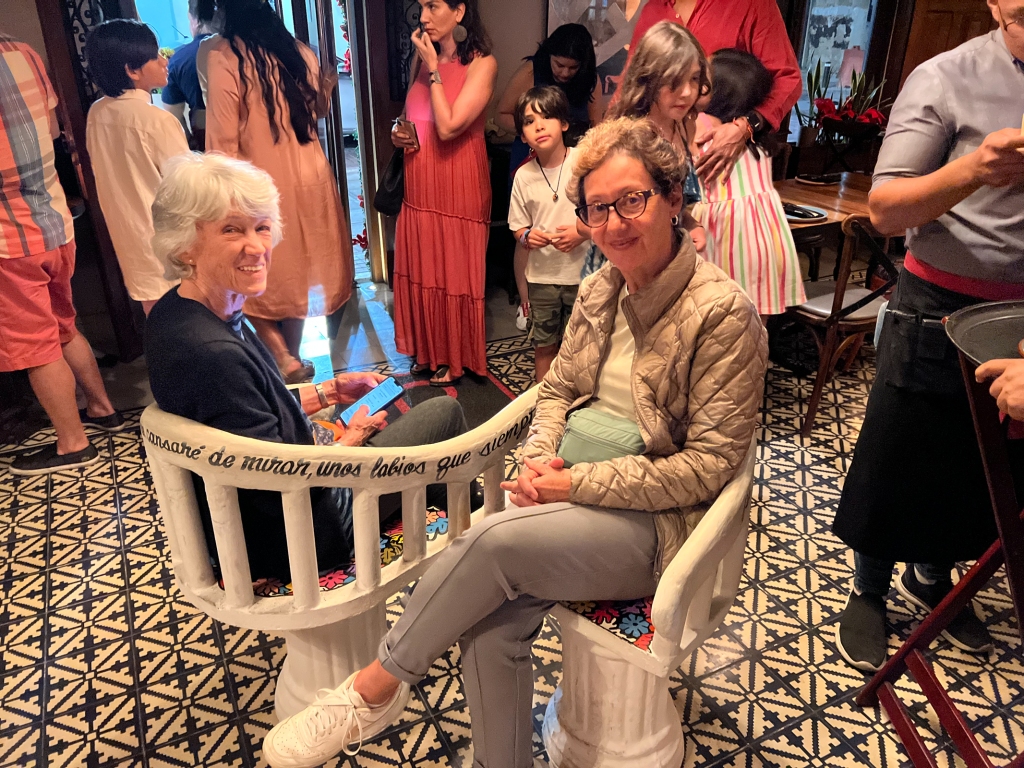
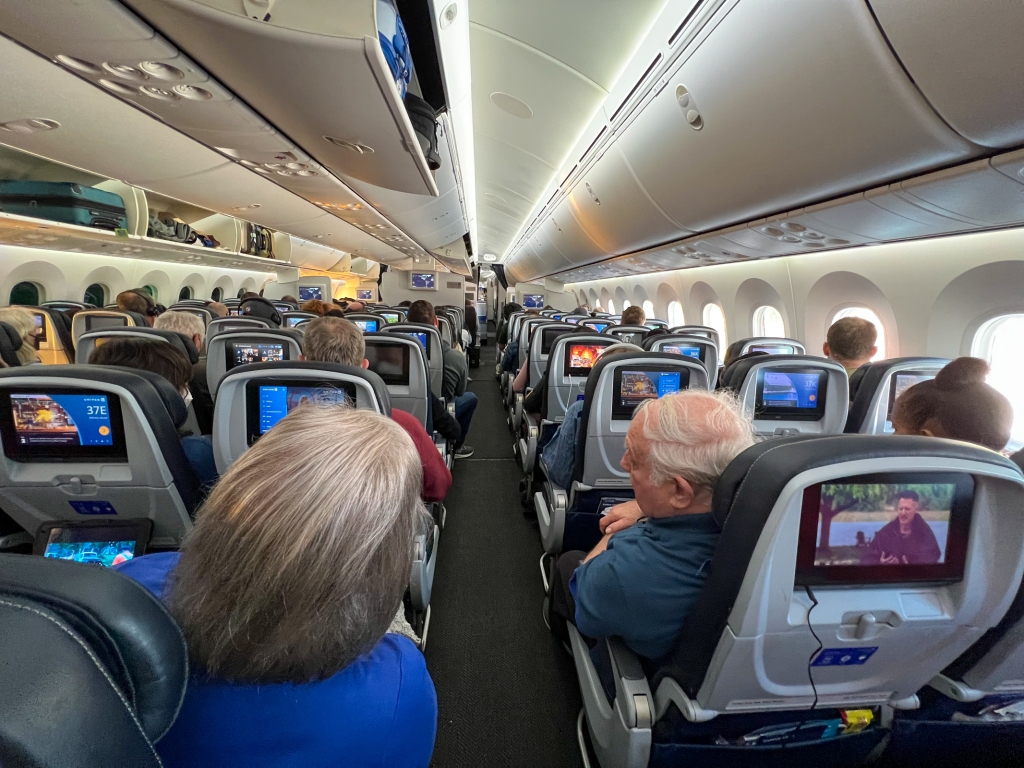
We continue to wrap up our Library Road Trip with a trip to northern Mexico this Spring. Until then…

Wow !!!
&
Hi !
<
div dir=”ltr”>Wh
What a thoughtful and in-depth accounting of your project! I so enjoyed that you have a family to travel, explore, and experience the cultures with and share them with us. Of course your photo expertise finds the expansive images not to be forgotten. The tucked away libraries and your documentation are testament to the human need for communicating knowledge and experience!
Amazing voyage and love to all! x o. Catherine
Hi guys Not sure our comment made it thru, so wanted to say how much we love your stories. Always so delightful and interesting!! Next in Santa Cruz….. not as interesting but fun!! Happy and healthy new year to you both…. Love. Tina and Ken
Sent from the all new AOL app for iOS
I kept getting distracted and leaving the email, then coming back. Wh
Dear Robert, Thank you for sharing this wonderful account of your Mexican journey, in search of libraries and much else. I am sad to admit that I have still not travelled in any of the Spanish and Portuguese speaking parts of the American continents! I must make amends! I took a wonderful course on Pre-Columbian sites at Yale (taught by the great George Kubler), but I’ve never seen any of these places! I’m glad to know that your library project is flourishing in diverse parts of the world. A wonderful new year to you all! Jeffrey